Abstract
Inactive ocular toxoplasmosis (OT) is not confined to immunocompromised patients but is also common in immunocompetent patients. It could result in a loss of vision, asteroid hyalosis, lenticular opacity and peripheral chorioretinal scar. More often than not, misdiagnosing the lesion may occur because of the lack of presenting symptoms. Therefore, this article aims to highlight OT and its consequences, emphasising the approach that must be followed to diagnose and manage the disease optimally. This case report is about a 24-year-old woman who had blurred vision in her left eye from the age of 9 years. After dilation for fundus examination and taking the patient for retinal imaging, the fundus showed a clearly defined pigmented chorioretinal scar on the temporal side of the macula.
Contribution: As the disease has the ability for retinal complications, documenting any progressive developments of the disease is essential to manage the patient better.
Keywords: Ocular toxoplasmosis; asteroid hyalosis; lens opacity; dilation; Toxoplasma gondii.
Introduction
Ocular toxoplasmosis is a zoonotic progressive necrotising chorioretinitis,1,2 which may occur at any given time.1 It is caused by a protozoan micro-organism called Toxoplasma gondii (T. gondii).1,2,3 Felids (colloquially referred to as cats) are the definitive hosts,2 specifically the Felis catus, known as the domestic cat.4 Toxoplasmosis may be acquired transplacentally or through the ingestion of uncooked and infected meat, contaminated vegetables or water.3,5 Previously it was presumed that the recurrence of the disease in adult life was because of the organism’s dormancy; however, acquired infections may at any given time account for a larger portion of ocular connection than innate (congenital) toxoplasmosis.3,5,6,7 Active ocular toxoplasmosis (OT) appears as a yellow-white chorioretinal lesion with indistinct margins, coupled with overlying focal vitreous infiltrates described as a headlight in the fog.1,6 Furthermore, a localised perivasculitis may occur around the arterioles,6 while an inactive form of OT appears as a large pigmented chorioretinal scar and an atrophied lesion that may be in clusters or strings around the posterior pole and has been described as a macular coloboma.1,6,7
Toxoplasmosis causes inflammation that affects all structures in the eye, leading to the classic manifestations of the disease, including the opacity of the crystalline lens (cataract), acute uveitis that progresses into a chronic inflammatory disease and multiple discrete foci of deep retinal disturbances,1,8 as well as asteroid hyalosis (AH).9 Although the pathogenesis of cataracts is not known in congenital toxoplasmosis, in a murine model study, cataract formation was because of a deoxyribonucleic acid (DNA) deposition through parasite replication and inflammatory cells arriving via the hyaloid artery during lens development.8 Thus, chorioretinitis as a result of OT is associated with lenticular opacity. While AH is a condition in which small yellow-white, spherical particles known as asteroid bodies are present within the vitreous body, surgical removal is rarely required. Although asteroid hyalosis fills the vitreous body with opaque structures, it generally only has a minor impact on vision.9,10 The aetiology of AH remains to be established; however, the unilateral occurrence of AH can be postulated to vascular leakage secondary to inflammation, retinal pigment epithelial degeneration, local changes in pH and vitreous collagen degeneration that lead to the increased calcium and lipid levels of the vitreous.9 Also, AH initially develops near retinal blood vessels.9
This article would like to present the case of an African female patient who presented to the university optometry clinic for a routine eye examination. This case report will also outline the events that unfolded during the eye test, such as pupil dilatation to allow the examination of the fundus and the lens using retro-illumination. Furthermore, the article will discuss the importance of a thorough ocular examination in a patient presenting with peripheral retinal lesions, such as chorioretinal scar as a result of OT associated with lenticular opacities and AH. Consent to write the case report was sought from the patient, and permission was granted. The patient was then given a consent form to sign before submitting the manuscript.
Case presentation
A 24-year-old female patient recently came to the optometry clinic at the university, complaining of blurry vision at far in the left eye only. Following case history, the patient reported having first experienced difficulty seeing distant objects during Grade 3, at the age of nine years in 2006, and she then consulted with an optometrist who prescribed spectacles for distance vision.
Upon completion of history noting, the patient was then examined in a general clinic by a third-year optometry student, after which she was referred to the Ocular Disease Management Clinic (ODMC) for further examination. The patient was referred on suspicion of glaucoma after ophthalmoscopy. The results showed a cup-to-disc (C/D) ratio of 0.5, both horizontal and vertical, on the oculus dexter (OD) and oculus sinister (OS).
In the ODMC, the patient’s visual acuity without any correction was OD 6/6, OS 6/12 and oculus uterque (OU) 6/6 using a Snellen Chart at 6 m. Near visual acuity was measured at 40 cm, and the results obtained showed OD 20/20E, OS 20/40E and OU 20/20E. The direct and consensual pupillary examinations were negative afferent pupillary defect (APD) and relative afferent pupillary defect (RAPD). Using the confrontation method, full visual fields were obtained on field screening. The Van Herrick technique was performed before dilation and revealed 1:2, suggesting that the anterior chamber angle was wide open. After evaluating the iridocorneal angle, 1% topical tropicamide (mydriatic agent) was used to dilate both eyes to examine the posterior chamber. The OD was within normal limits with all the tests; however, on the OS a retro-illumination technique was performed and revealed shiny particles on the base of the vitreous humour. Superiorly, the crystalline lens showed opacities (Figure 1). Fundus biomicroscopy (90 dioptres [D]) and indirect on OS showed a 0.5 cup disc ratio horizontal and vertical, 2:3 accommodative vergence cross-link (AV/A) ratio, indistinct disc margins and a geographic scar near the macula. Intraocular pressure using Goldman tonometry revealed OD: 15 mmHg and OS: 13 mmHg. Gonioscopy showed inferior ciliary body band (CBB), nasal scleral spur (SS), superior SS and temporal SS for OD, and OS showed inferior SS, nasal SS, superior SS and temporal SS. An optical coherence tomography (OCT) scan on OD was unremarkable, while OS showed a geographic map near the macula (Figure 2) with a total disruption of retinal layers to the choroid while the macula was spared from the lesion (Figure 3). Taking into consideration the OS, the differential diagnosis was OT, AH, glaucoma and retinal geographic atrophy. The definitive diagnosis was OT, AH and lenticular opacity.
 |
FIGURE 1: A retroillumination image of the left eye showing peripheral crystalline lens opacities concentrated superiorly, with diffuse opacities that respect the visual axis. |
|
 |
FIGURE 2: Colour fundus photograph of the left eye showing the chorioretinal geographical map scar of old toxoplasmosis. This photo shows a fundamental defect to the choroid with the sparing of the macula, especially the fovea centralis. |
|
 |
FIGURE 3: A cross-section image of an OCT showing a retinal coloboma-like lesion and a total disruption of the retinal layers extending to the choroid and sclera, with remnants of the retina. |
|
Management
The patient was referred to an ophthalmologist for further management.
Discussion
The patient seen in the ODMC was exposed to T. gondii. The infection resulted in a large chorioretinal scar (inactive OT),1 AH10 and lenticular opacity.8 The lesion was deeply affected by the involvement of the retina to the choroid and sclera, leaving an apparent demarcated scar around the posterior pole. Glaucoma was ruled out because the patient’s neuroretinal rim followed the ISNT rule (inferior ≥ superior ≥ nasal ≥ temporal); also, a large optic cup should not be the only leading variable enabling a glaucoma diagnosis.11 The differential diagnosis includes a retinal geographic scar (RGS), commonly found in a patient with age-related macular degeneration. However, considering the patient’s age and that the scar was unilateral, RGS was ruled out.
Furthermore, the patient’s immunocompetence plays an important role in resolving the active infection of Toxoplasmosis.5 The presence of AH in this patient was because of inflammation of the retinal blood vessels, resulting in the presence of phospholipids on the vitreous base.10 The manifestation of lenticular opacities results from the DNA deposits through the hyaloid artery during lens development.8 The management of the patient was limited to referral to an ophthalmologist because of the limited scope of practitioners. However, the medical treatment for OT is clindamycin and prednisone.
In this patient, it was difficult to examine the fundus properly without dilatation of the pupil; hence, the chorioretinal scar was missed in the initial examination. Therefore, it is recommended that optometrists, as primary eye healthcare providers in private and public healthcare, professionally develop themselves to use diagnostic drugs to dilate the patient and give a thorough ocular health examination. Also, the use of OCT is pivotal to detecting the extent to which the lesions on the retina and the choroid present themselves and documenting any progressive developments of diseases. Therefore, any recurrence along the margins of a scar as well as complications such as fibrous band, retinal detachments and optic neuritis may be documented to manage the patient properly.
Acknowledgements
The author would like to thank a third-year optometry student for referring the patient to an ocular disease management clinic. The author would also like to thank the University of Limpopo, Department of Optometry, for allowing him to supervise a final-year student to assess the patient as part of learning and to use the data from their patient records. The author would like to thank the South African Medical Research Council, under Research Capacity Development under Bonganie Mayosi National Health Scholars Programme. Finally, the author would like to thank HL Sithole for proofreading the manuscript.
Competing interests
The authors declare that they have no financial or personal relationships that may have inappropriately influenced them in writing this article.
Author’s contribution
D.G.M. supervised the examination of the patient, designed the study, analysed data and composed the manuscript in its entirety.
Ethical considerations
Consent to write the case report was sought from the patient, and permission was granted. The patient was then given a consent form to sign before submitting the manuscript.
Funding information
This research received no specific grant from any funding agency in the public, commercial, or not-for-profit sectors.
Data availability
Data sharing is not applicable to this article as no new data were created or analysed in this study.
Disclaimer
The views and opinions expressed in this article are those of the author and do not necessarily reflect the position of the Department of Optometry at the University of Limpopo.
References
- Park YH, Nam HW. Clinical features and treatment of ocular toxoplasmosis. Korean J Parasitol. 2013;51(4):393–399. https://doi.org/10.3347/kjp.2013.51.4.393
- Spickler AR. Toxoplasmosis [homepage on the Internet]. 2017 [cited 2021 Oct 10]. Available from: https://www.cfsph.iastate.edu/diseaseinfo/disease/?disease=toxoplasmosis&lang=en
- Ozgonul C, Besirli CG. Recent developments in the diagnosis and treatment of ocular Toxoplasmosis. Ophthalmic Res. 2017;57(1):1–12. https://doi.org/10.1159/000449169
- Macdonald D, Loveridge A, editors. The biology and conservation of wild felids. New York: Oxford University Press; 2010.
- Commodaro AG, Belfort RN, Rizzo LV, et al. Ocular toxoplasmosis: An update and review of the literature. Mem Inst Oswaldo Cruz. 2009;104:345–350. https://doi.org/10.1590/s0074-02762009000200030
- Stokkermans TJ, Havens SJ. Toxoplasma retinochoroiditis. Treasure Island, FL: StatPearls; 2020.
- Braham Z, Boukari M, Ammous I, Boussen M, Errais K, Zhioua R. Bilateral congenital macular coloboma: Swept-source optical coherence tomography findings. Tunis Med. 2018;96(8–9):524–527.
- Arun V, Noble AG. Toxoplasmosis study group. Cataracts in congenital toxoplasmosis. J Am Assoc Pediatr Ophthalmol Strabismus. 2007;11(6):551–554. https://doi.org/10.1016/j.jaapos.2007.03.017
- Mishra C, Tripathy K. Asteroid hyalosis [homepage on the Internet]. Treasure Island, FL: StatPearls Publishing; 2021 [Updated 2021 Aug 11; cited 2021 Oct 15]. Available from: https://www.ncbi.nlm.nih.gov/books/NBK554375/
- El-Sayed NM, Aly EM. Toxoplasma gondii infection can induce retinal DNA damage: An experimental study. Int J Ophthalmol. 2014;7(3):431–436. https://doi.org/10.3980/j.issn.2222-3959.2014.03.08
- Chauhan BC, Burgoyne CF. From clinical examination of the optic disc to clinical assessment of the optic nerve head: A paradigm change. Am J Ophthalmol. 2013;156(2):218–227. https://doi.org/10.1016/j.ajo.2013.04.016
|